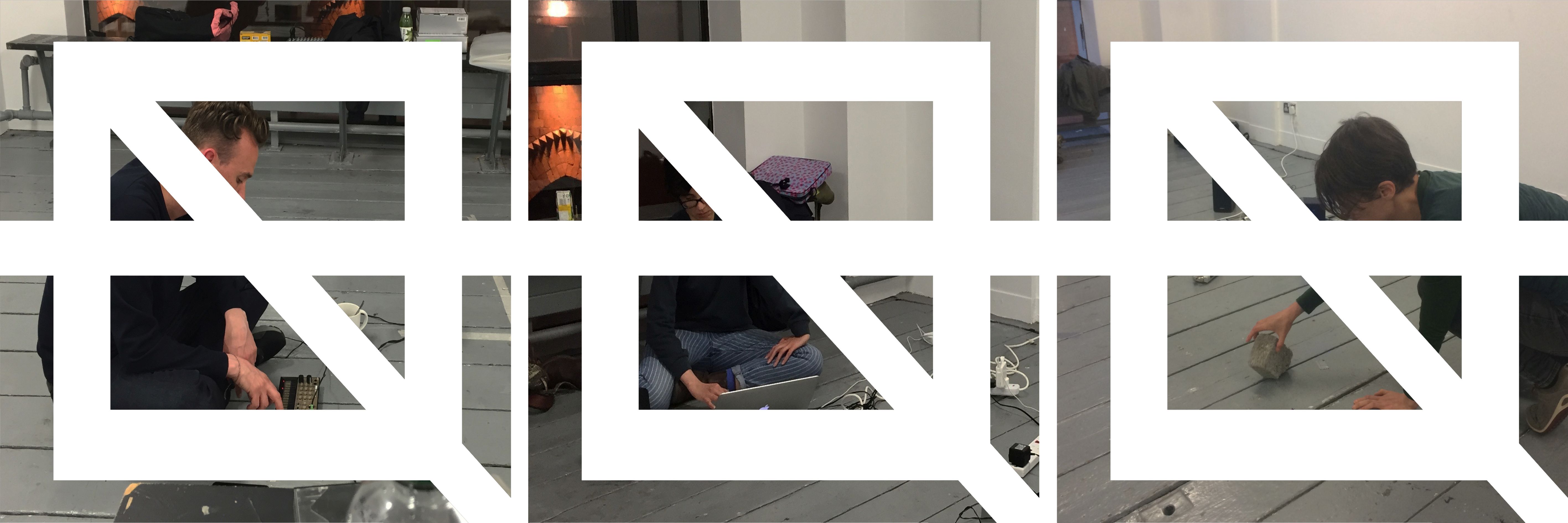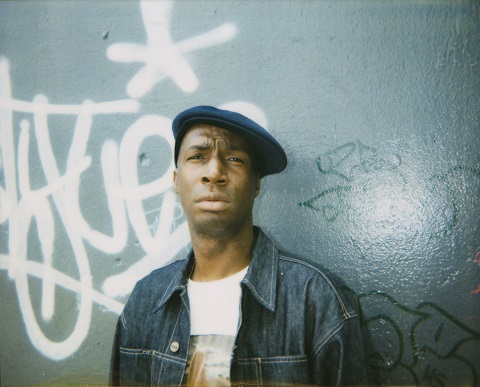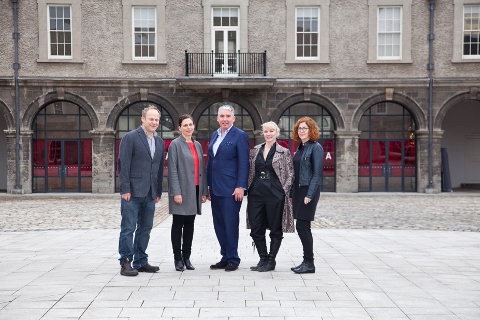IMMA (Irish Museum of Modern Art) launches its Autumn programme this week with two new exhibitions selected by two guest curators; Indian curator Sumesh Sharma (Clarkehouse Initiative, Bombay) and Irish curator Kate Strain (Grazer Kunstverein / RGKSKSRG). Both have been invited by IMMA to present new projects at the Museum that reflect their individual curatorial practices and in doing so bringing new curatorial perspectives into IMMA’s programme. The exhibition opens to the public on Thursday 15 September at 11.30am with a gallery talk from the curators.
Speaking about this initiative Director Sarah Glennie said “Core to IMMA’s mission is the support of artists’ work through exhibitions, commissions, acquisitions and other interventions in IMMA’s programme. We believe it is also vital to support the work of new curatorial voices in the museum, both from Ireland and from a more global perspective. There are often great differences in the activation of gallery spaces, and the types of exhibitions and indeed the types of work that are mounted outside of the Museum context. Invited Curators is a new programme that not only platforms the work of two exciting curators who each have very different, but very strong curatorial practices, but it also allows us to work in new ways as an institution and we hope will give our audiences an insight into how contemporary art is rapidly evolving internationally.”
This project is presented as part of an exciting on-going initiative, New Art at IMMA, proudly supported by Matheson, which allows IMMA to continue to support artists’ vital work in a strand of programming that recognises and nurtures new and emerging talents, new thinking and new forms of exhibition-making.
Kate Strain (IRL), in association with the Centre For Dying On Stage and Cow House Studios, presents The Plough and other stars (the title an homage to O’Casey’s renowned play The Plough and the Stars), an exhibition which proposes some alternatives to death, including space travel, time travel and reincarnation. New Works by featured artists Riccardo Arena, Richard John Jones, Lara Khaldi and Yazan Khalili are brought together in the immortal domain of the museum to explore strategies towards life extension, at the very least by artistic if not by other means. The exhibition functions as both a show, for people to come and visit, and a rehearsal space for the development of a new theatrical production.
In an separate space Sumesh Sharma (I) presents Historica – Republican Aesthetics, an exhibition that deals with the idea of the State and nation building as a context for art making. It explores the relationships that people hold with identity and the nation, defined by other factors such as race, religion, tradition, cuisine, geography and history that together define culture. How do India and Ireland, both post-colonial societies that won independence from Britain, today celebrate many years of independence but still grapple with nationalism and false pride? How do artists define republicanism and nationalism? What are the aesthetics of a modern secular state?
Featured artists include: Judith Blum, Krishna Reddy, Nandalal Bose and Benode Behari Mukherjee, Poonam Jain, Sawangwongse Yawnghwe, Yogesh Barve, Sachin Bonde, Ruth Clinton & Niamh Moriarty, Nadine el Khoury, Aurélien Froment, Aurélien Mole, Caecilia Tripp, Kemi Bassene, Naresh Kumar, Saviya Lopes, Seamus Nolan, and Amol K Patil.
Admission to both exhibitions is free of charge and there is a series of free talks and curators tours taking place during the year – see www.imma.ie for more details. These exhibitions will be closely followed next week by the opening of a significant new sound and film work from Irish artist Jaki Irvine entitled If the Ground Should Open…. Part of the official Ireland 2016 programme the work is based on her 2013 novel ‘Days of Surrender’ which tells the story of Elizabeth O’Farrell and her partner Julia Grenan, two out of several hundred women who took an active part in the Rising yet were almost erased out of history, consigned to the margins as the narrative was masculinised.
Later in the Autumn IMMA launches IMMA Collection: Freud Project, 2016 – 2021; a significant selection of 50 works by Lucian Freud (1922-2011), regarded as one of the world’s greatest realist painters, which are on long-term loan to the IMMA Collection; Europa, the first survey exhibition of Palestinian artist Emily Jacir’s work in Ireland which brings together almost two decades of sculpture, film, drawings, large-scale installations and photography with a focus on Jacir’s work in Europe, particularly Italy and the Mediterranean. IMMA closes out the year with another new commission; a new film by Turner Prize winning artist Duncan Campbell, his first to be filmed in Ireland.
For more information and images please contact [email protected] or 01 612 9922.
– ENDS –
EDITORS NOTES
ABOUT THE CURATORS
Kate Strain is the Artistic Director of the Grazer Kunstverein. Based between Austria and Dublin, ongoing curatorial projects include The Centre For Dying On Stage, an online research and commissioning body; Department of Ultimology, a new department established in 2016 in Trinity College Dublin; and RGKSKSRG, the paired curatorial practice of Rachael Gilbourne and Kate Strain. Strain has worked at Project Arts Centre, the National College of Art and Design, and internationally on collaborative projects in Torino, Amsterdam and St Louis.
Sumesh Sharma co-founded the Clark House Initiative, Bombay in 2010 where he presently is the curator along with being the invited curator to the biennale of African contemporary art – Dak’Art 2016, Senegal. His practice deals with alternate histories that are informed by the Black Arts movement, Socio-Economics, Immigration in the Francophone and Vernacular Equalities of Modernism.
ABOUT THE WORK: THE PLOUGH AND OTHER STARS
Richard John Jones’s work takes the form of a series of fabric hangings and a ceramic floor sculpture made of unfired clay. These new works are inspired by medieval travel journals and Isolarii (‘island books’ that first appeared around the 5th century in Europe). Jones is interested in this body of literature as a mixture of embellished real accounts of foreign lands and extravagant fictional stories. Considered as factual at the time and often heavily illustrated, these manuscripts represented an early form of mapping – the ‘elsewhere’ in both political and geographical terms always being used as a way of imagining and defining the idea of ‘here’. For his fabric/ceramic works, which he often refers to as paintings, Jones imagines medieval monsters, islands and fictional travellers as avatars for species now becoming extinct through global warming, pollution and industrialisation. Jones enacts a queering of history by exploring how representation and story-telling act as a form of reproduction, in a time when humans are at the centre of what could be their own imminent erasure and perhaps subsequent fictionalisation.
Riccardo Arena presents a celestial collage based on his expansive research project Vavilon. This project began four years ago, in the Solovki Islands – a remote constellation of islands in the White Sea. Arena’s enquiries brought him into close contact with Russian cosmism, a philosophical movement that encourages practitioners to think beyond the limits of human possibility, and seek eternal life through science and space travel. Arena intuits narrative links between disparate things, moments, and energies. From the hard and ancient soil of the Solovki islands he reaches up into the celestial heights of aeronautical travel. His work as part of The Plough and other stars is an elaborate collage, a kind of exploded visual narrative that articulates his layered process of understanding, through the labyrinthine portrait of a voyage. Screenings of Arena’s video work Vavilon will take place at intervals during the exhibition. Please see www.imma.ie for updates.
In his silent video work, Yazan Khalili presents a series of photographs of masks he shot at two colonial museums – the Tropenmuseum in Amsterdam and the Musée du Quai Branly in Paris. He juxtaposes these mug shots alongside the moving image of a live human face. Both the ancient masks and the figure on-screen are scrutinised by basic facial recognition software in-built within the artist’s phone. The human tries to trick the technology with hopeless gestures that obscure her features, in an effort to make herself undetectable. The work is an exercise on how to disappear in the digital age, under the weight of history and against the flow of time. It is also a meditation on what it means to be seen, how we apprehend whose gaze, and the effect the mechanical eye can have on our future as well as our past.
Through Arena’s metaphysical enquiries, Jones’s material encounters with forgotten histories; Khaldi and Khalili’s efforts to communicate with bodies that have disappeared, and the ghostly presence of The Centre For Dying On Stage; the artworks and artists in this exhibition imaginatively explore the poetics of immortality.
Biographies on each of the artists featured in The Plough and other stars are available on our website.
ABOUT THE ARTISTS: HISTORICA – REPUBLICAN AESTHETICS
Judith Blum grew up in New York to Jewish parents who fled Vienna and the Nazis. She answers some of these questions with an autobiographical frieze called Misterioso – a mystery of identity and history, informed by the many paths she has taken. She studied art in Paris, where she fell in love with the Indian printmaker and conceptual artist Krishna Reddy. Reddy trained under numerous masters including Ramkinker Baij, Benode Behari Mukherjee, and Nandalal Bose. In this exhibition we see photographs of Reddy’s earliest sculptures which he made in terracotta or plaster when he reached London to study at the Slade and later in Paris to assist artists such as Joan Miró and Ossip Zadkine. These varied works speak the vocabulary of modernism.
Other historic works are those of Nandalal Bose and Benode Behari Mukherjee who combined the use of everyday contexts, with techniques that were not typically Indian, to present works that did not conform to what was taught by the Western Classical Fine Art academies that the British had established in India. These artists were abhorred by Rabindranath Tagore, who founded the Liberal Arts University of Santiniketan, where Judith Blum became a disciple of Bose and Mukherjee. Bose designed the murals that adorned the 1938 Haripura Congress where Indian nationalists asked the British to set India free. Later Reddy was to join them to assist on the murals that depicted India’s rich history for the newly independent India’s presidential palace.
Naresh Kumar, a member of Clark House Initiative, has created a Taziya, or a Shia celebration float using tracing paper and sawdust he collects from construction sites. He uses images of the domes of mosques and temples combined with the words of Babasaheb Ambedkar, the author of the Republican Indian constitution, about a secular state that promises equality; yet one that is often disrupted by religious riots. Using cheap LED lights and other paraphernalia drawn from motifs of popular religious culture, Kumar acknowledges the importance simple ritual holds the lives of the poor – particularly in his native state of Bihar but that these can quickly be made into vehicles for sectarian hatred.
In Lampedusa, (Italy) Caecilia Tripp records the voices and waves of those refugees and migrants that come from distant lands or where people have lost their nation through war. They are often unwelcome in Europe, so Kemi Bassene creates a shield, a device of shamanistic protection – one that was much needed by Thomas Sankara and Patrice Lumumba, two prominent anti-imperialist post-independence West- African leaders who were killed for resisting their erstwhile colonial masters. Nadine El Khoury colours the Mediterranean red on an antique map, thus destroying the map’s value but narrating an unending separation of death and hate defined by the sea – one that it is unspoken and feared as a story and unable to be told on the walls of European galleries.
Saviya Lopes makes a tribute to the idealisation of virginity in the church by representing a fish, an image with resonance over several religions. Institutional discrimination against women has a prominent space amongst all religions, here women narrate and weave their angst into stories like the quilt her grandmother makes.
Ruth Clinton & Niamh Moriarty think broadly about female bodies in Irish history and folklore. Using a mirror as a sort of abstracted Morse signal, the reflected light communicates between performer and camera in order to momentarily transform the buildings around Cobh, where these images were created, into beacons (or temporary lighthouses) instead of symbols of colonialism and religion. They also attempt to conjure the melancholic image of the guarded daughter, trapped in a tower, who frequently appears in folk tales both in Ireland and abroad.
Seamus Nolan draws a comparison between the women’s movement Cumman na mBan and the Kurdish women’s militia the YPJ by thinking about the celebration of Ireland’s military/cultural revolution this year and how women have been re-appropriated within national history and their military contribution finally valued.
Aurélien Mole photographs Amma Kesava Naidu in the nude in the same poses she was asked to sit by portrait students in the Sir JJ School of Art, India’s oldest Western Classical Fine Art Academy. It was established a year after India’s first armed revolution against British colonisation. Mole imagines an objectifying gaze and the Greco-Roman traditions of aesthetics that propped up modernism. Naidu sat for many modern painters the most celebrated being Akbar Padamsee.
Poonam Jain makes a garland of stuffed tissue, of the type that adorns the statues of leaders, these are large to fit a statue of monumental size. Many are unveiled each year in India to celebrate dead politicians, sculpted in the tradition of those who colonised that country.
Sawangwongse Yawnghwe erects door signs in brass and plastic that narrate seemingly nonsensical (but actual) accounts of Myanmar’s continuing denial of freedoms to its people.
Amol K Patil, has made his work on nineteen plates of glass. He draws his family and extended group of cousins who wake up every morning to form teams to clean the streets of the city. They come from a community of folk performers and bards, who are ‘untouchables’ the Dalits who sit at the bottom of India’s caste system. Social Justice for the Dalits is currently in fashion across all political scenes in India. Amol K Patil questions the sudden fetishisation of the Dalits, instead he etches into monumentality the daily performance of his cousin cleaning streets, a vocation that is etched into their lives.
Sachin Bonde brings to the museum an object rendered obsolete by digital technology; weighing scales made in brass which depended upon the honesty of the handler and the trust shown on him or her by the client. The Sikh religion described its principles of equality using the metaphor of an honestly balanced pair of scales.
Yogesh Barve turns the museum catalogue of the former Prince of Wales Museum in Bombay into a public art project. Objects from across the empire were brought there from present day Pakistan, Myanmar, Nepal, Egypt, Tibet and China. The museum was a colonial delight that defined the extent of the empire. As the objects have lost their significance as representations of visual culture so have colonial systems of nationhood that define identity fade away in a world connected by the internet – a world much larger than the tangibility of geography.
Aurélien Froment and his film with Somnath Mukherjee present the crescendo of the exhibition. Mukherjee travelled for three years on a bicycle from Calcutta to Dakar in Senegal, a journey that took five years from1982 to 1987. There he met the Senegalese singer Amadou Badiane, who had lived in India, had begun a Indo- Senegalese Music club. Mukherjee arrived in Senegal on a Lesse-Passe document and has lived there since, not holding any nationality, but making a living by teaching young Senegalese people lessons in Indian dance and music. He survives not on fees but on their gifts of food and shelter. Froment lets you inhabit Mukherjee’s gaze and what he sees with his art, thus defining modernism and conceptual practice outside the maze of the market and the museum and specifically in the spirit of non-nationality.
TALKS AND EVENTS
Opening Gallery Talks: Invited Curators Projects
Thursday 15 September, 11.30am, Main Reception, FREE
Join us for the opening of, The Plough and other stars curated by Kate Strain and Historica – Republican Aesthetics curated by Sumesh Sharma, presented concurrently in IMMA’s galleries. In two short gallery talks both curators will introduce their individual exhibition ideas and the artist’s they have selected to be part of their IMMA project. Conversations will continue over a coffee/tea reception afterwards.
Curators Lunchtime Talk Series
Friday 7 October, 1.15-2pm, Meeting Point, Main Reception, FREE
Seán Kissane, Curator Exhibitions, IMMA, introduces IMMA’s new invited curator’s initiative with current projects by Sumesh Sharma and Kate Strain.
Love Letter to Mars
Saturday 26 November 2016, time tbc, part of the IMMA Symposium, FREE
As part of the public events programme of the exhibition Lara Khaldi and Yazan Khalili present a new iteration of a live lecture performance. Love Letter to Mars is based on an exchange of letters between two earthly lovers and their fictional friend. This character, named Wa’ad, has left the dying ecosystem of planet earth, in search of a new life on Mars. Here the letter acts as a kind of time travel, transcending the limitations of linear time in space, to become the vehicle through which the pair reflects on ideas around loss and distance, the occupation of territories, and the inherent dangers of language as a tool for colonisation.
The Centre For Dying On Stage
Ongoing, times vary
Throughout the duration of the exhibition, at irregular, unannounced intervals, artists participating in the performance project – The Centre For Dying On Stage – will assemble in the space of the exhibition to conduct meditations, workshops and rehearsals, influenced by and responding to the artworks on display. The Centre For Dying On Stage is a research body and performance project that generates new artistic undertakings, anchored to notions around death and the stage. Participants will use artworks from The Plough and other stars as prompts and props for thinking through strategies to overcome death, through metaphor and artifice. In this manner the exhibition will feed into and inform the development of a new play, which will act as a reincarnation of some of the ideas explored in this exhibition. The play will be presented in association with Cow House Studios, at Wexford Arts Centre, on the 11th and 12th of November 2016.
The acting members of the performance project The Centre For Dying On Stage are:
Jessica Foley / Marjorie Potiron & Lisa Hoffmann / Steven Randall / The Artist and Himself at 29 (TAH29)
Exhibition supported by
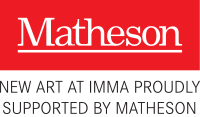
Official Hotel Partner
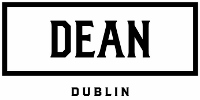

_(2).jpg)




